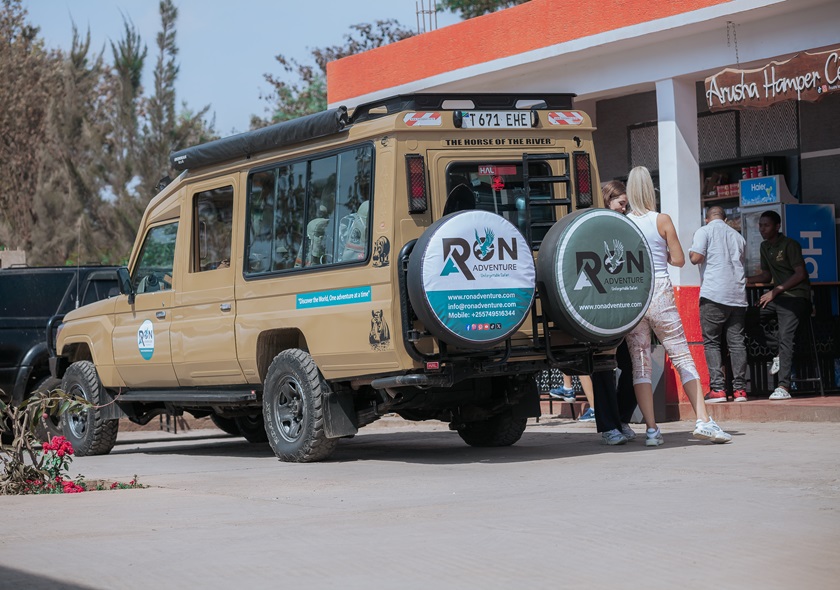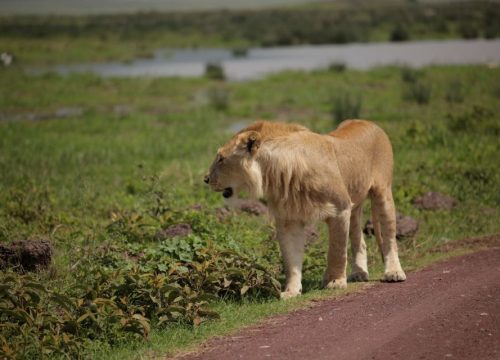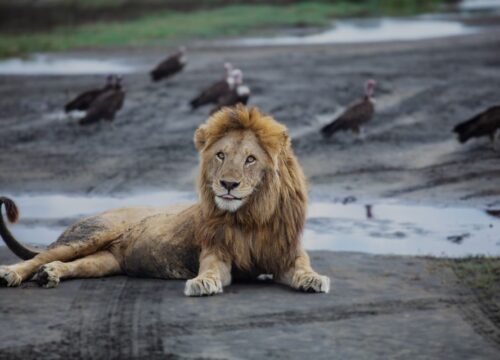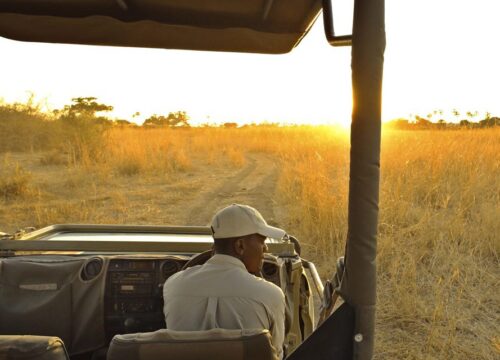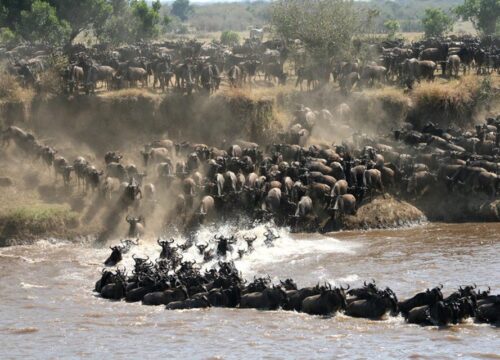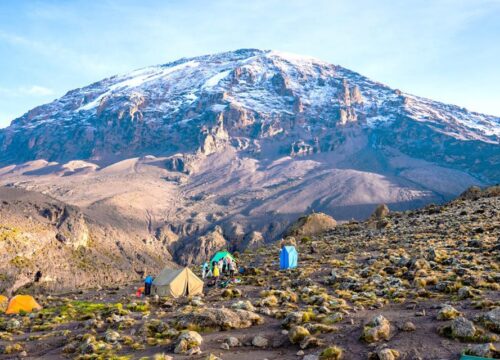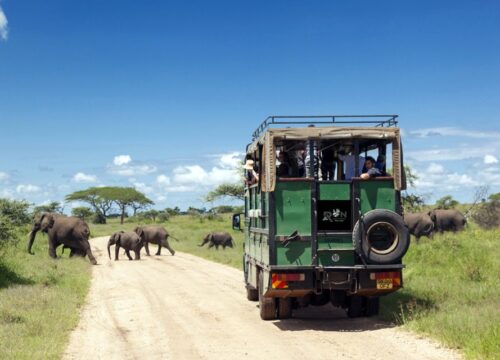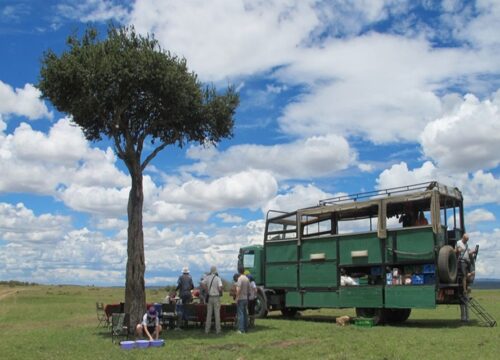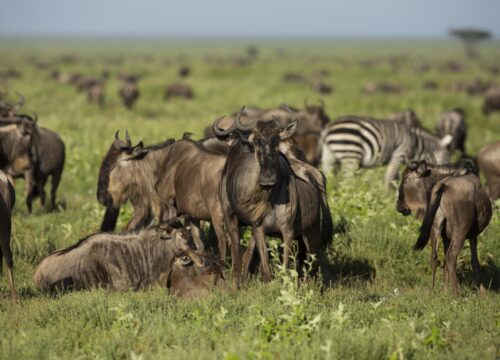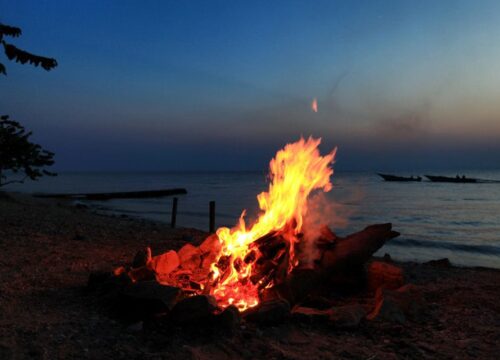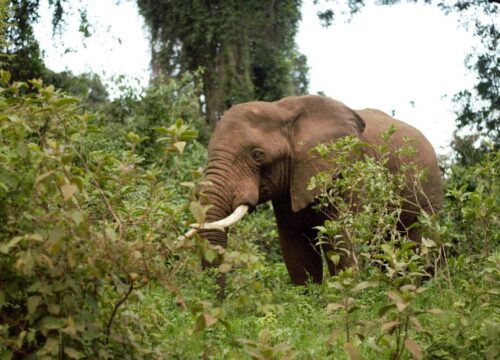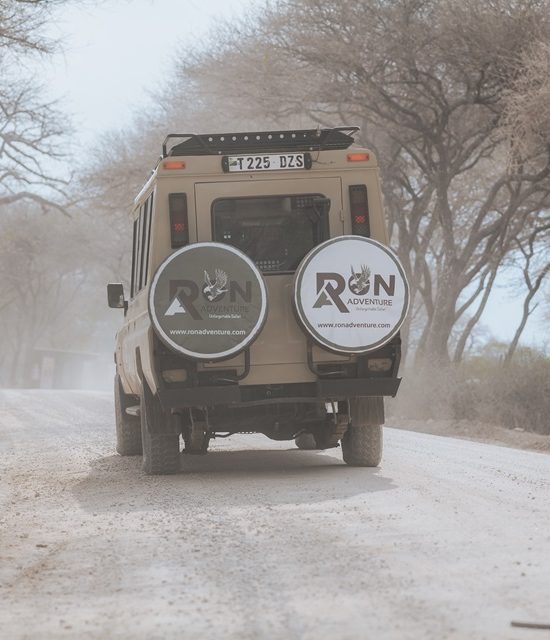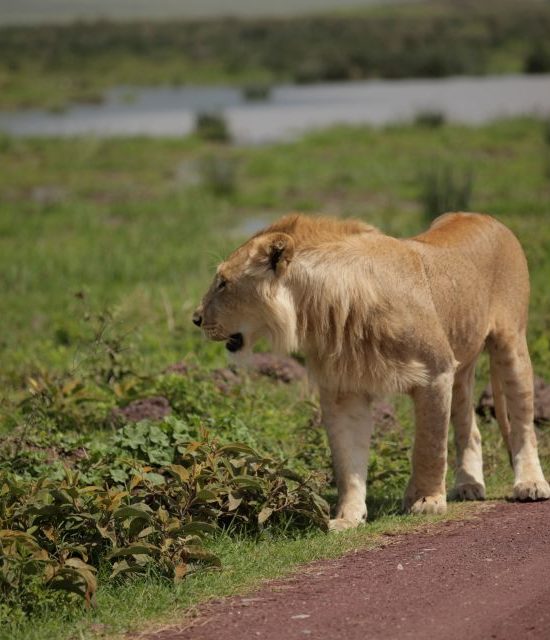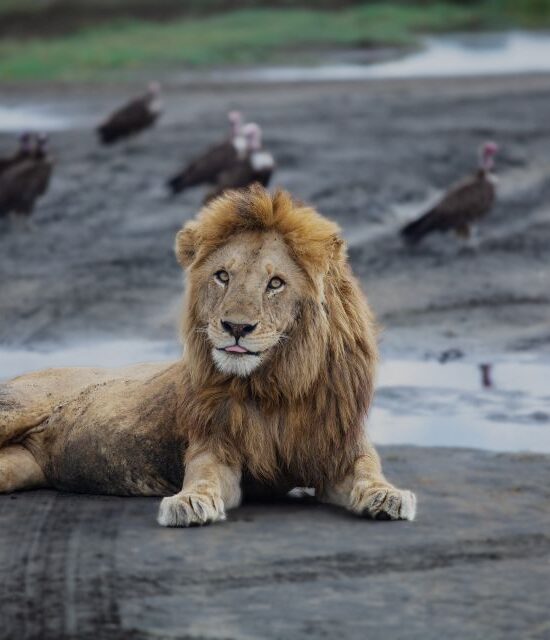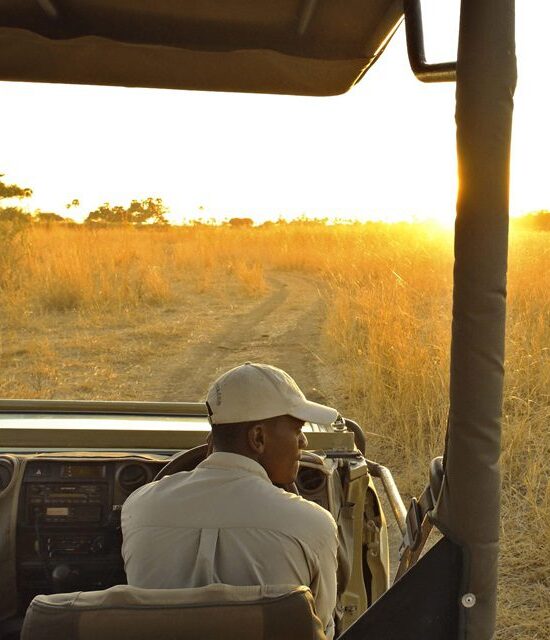Why Tanzania Is the Best African Safari Destination

Why Tanzania Is the Best African Safari Destination
Why Tanzania Is the Best African Safari Destination
Tanzania has earned a reputation as the crown jewel of African safari destinations, a country where the rhythm of the wild still guides the way of life and where every sunrise paints a new scene across landscapes that remain largely untouched. From enormous game-rich savannas to volcanic calderas, ancient rainforests, alkaline lakes, coral-lined coastlines, and culturally vibrant communities, Tanzania embodies the complete African experience in a way few destinations can match. Whether travelers dream of witnessing the thunder of hooves during the Great Wildebeest Migration, descending into the legendary Ngorongoro Crater, tracking lions across endless plains, or winding down days on the white-sand shores of Zanzibar, Tanzania delivers an unmatched sense of scale, authenticity, and adventure.
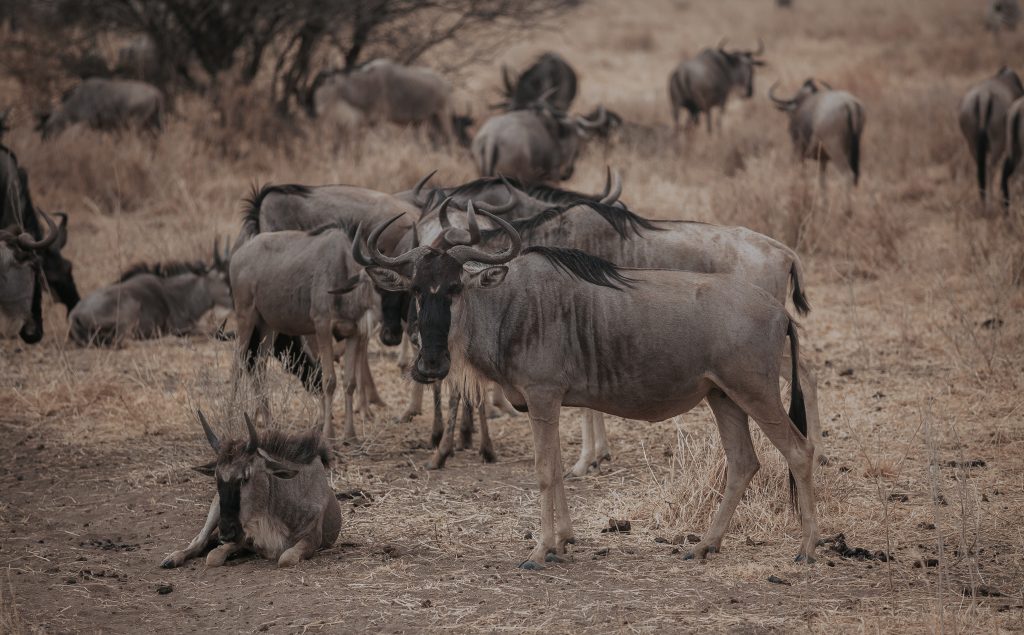
A safari in Tanzania connects travelers to Africa’s most iconic wildlife encounters. It is a place where elephants wander beneath towering baobab trees in Tarangire, where vast herds roam Serengeti’s golden horizon, where flamingos blanket the alkaline waters of Lake Manyara, and where predators rule the ecosystem with a balance shaped by millennia. But beyond the wildlife, Tanzania stands out because of the harmony between its natural wonders, cultural richness, and commitment to conservation. The country has created a model of responsible tourism that ensures travelers enjoy world-class experiences while helping protect delicate ecosystems and the communities living alongside them.
This is what makes Tanzania not just a great safari destination, but arguably the best in Africa.
Tanzania Is Home to Africa’s Most Iconic Wildlife Events
No other country on the continent hosts a wildlife event as remarkable as the Great Wildebeest Migration. Spanning the Serengeti’s vast ecosystem, this migration involves nearly two million wildebeest, accompanied by zebras and gazelles, moving in a circular, ancient pattern guided by rain, food, and survival instincts. The Serengeti’s portion of the migration is its heart and climax, showcasing river crossings, calving grounds full of newborns, and predator interactions that shape the cycle of life.
Each season in Tanzania offers a different face of the migration. Early in the year, the southern Serengeti and Ndutu region transform into the calving capital of Africa, where hundreds of thousands of wildebeest give birth within weeks. This attracts predators, lion prides, cheetahs, and hyenas, resulting in some of the most dramatic wildlife encounters anywhere on the planet. As the year progresses, the herds move north toward the Mara River, where the intense struggle to cross crocodile-filled waters creates scenes rivaling anything seen in wildlife documentaries.
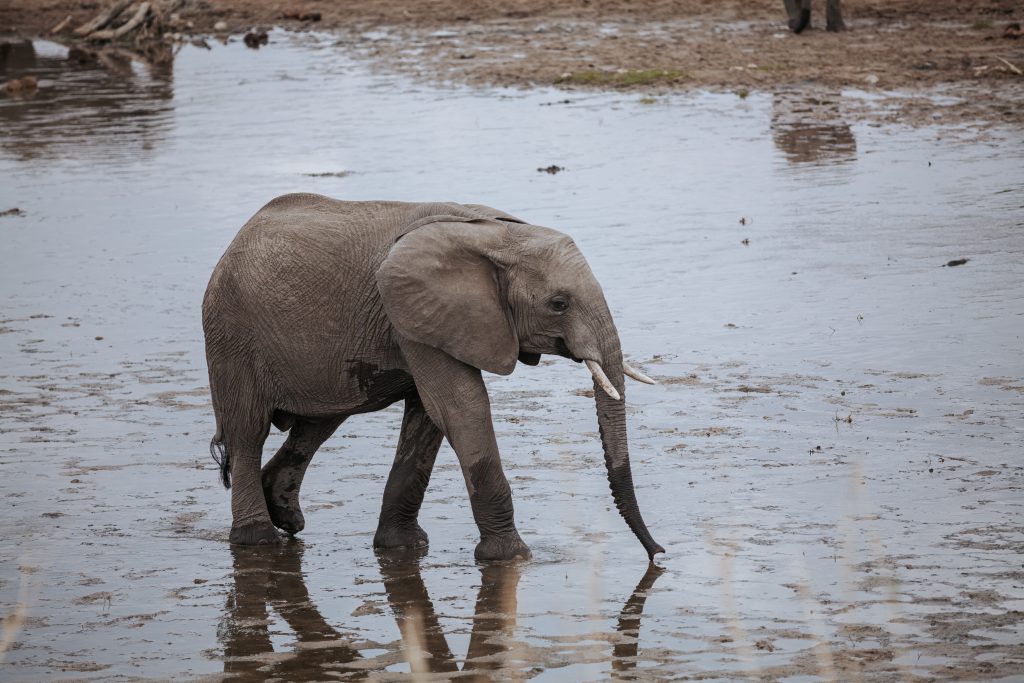
While the migration alone cements Tanzania’s place as Africa’s premier safari destination, the country offers much more. The Big Five, lion, leopard, elephant, buffalo, and rhino, are all found here, and Tanzania is one of the few places where you can realistically hope to see them all in a single trip. Populations of predators are thriving, especially in the Serengeti, which holds one of the densest concentrations of lions globally. Cheetahs use the open grasslands as hunting grounds, and elusive leopards cloak themselves in acacia trees, especially in the Seronera Valley.
The Serengeti Sets the Gold Standard for African Safaris
The Serengeti National Park is perhaps the most iconic safari destination in the world. Stretching across a breathtaking 14,750 square kilometers, it embodies the classic African wilderness seen in countless films, photographs, and documentaries. Serengeti’s value lies not only in its wildlife density but in its ecosystem’s purity. The landscape remains almost exactly as it was centuries ago, offering a safari environment so immersive that travelers feel transported into nature’s oldest story.
This is a place where golden grasses ripple beneath the sun, where kopjes rise like ancient monuments across the plains, and where predators and prey maintain age-old traditions that have shaped evolution. The sheer scale of the Serengeti ensures travelers can experience both solitude and spectacle, moments of quiet as you watch a lone cheetah surveying the plains, and moments of awe as tens of thousands of animals congregate in a single scene.
The park offers diverse safari regions, each with its own personality. The Central Serengeti, known for year-round wildlife, is rich in big cats. The Northern Serengeti draws travelers from July to October for dramatic river crossings. The Southern Plains, including Ndutu, serve as the calving grounds early in the year. Western corridors, remote wilderness areas, and hidden valleys make the Serengeti endlessly explorable.
Tanzania’s commitment to protecting this ecosystem is profound. The Serengeti is designated as a UNESCO World Heritage Site, with stringent conservation measures ensuring that modern pressures never overshadow the wilderness. This preservation effort ensures future generations will continue to witness the Serengeti’s magic.
Ngorongoro Crater: The Largest Natural Wildlife Sanctuary on Earth
If the Serengeti is Tanzania’s open savanna masterpiece, the Ngorongoro Crater is its geological crown. Formed over two million years ago, this massive caldera descends into a bowl of grassland, forests, lakes, and swamps that support extraordinary wildlife density. The crater’s enclosed ecosystem makes it one of the best places in Africa to see the Big Five in one game drive, particularly the endangered black rhino, which thrives in this protected habitat.
As travelers descend into the crater, the view from the rim offers one of the most dramatic panoramas imaginable. Clouds drift across the edges of the caldera, while below, thousands of animals graze in harmony. Lions lounge in the sun, hippos crowd freshwater pools, elephants wander through the Lerai Forest, and flamingos stand in delicate rows along the shores of Lake Magadi.

The Ngorongoro Conservation Area is also unique because it blends wildlife protection with human settlement. The Maasai people live within the region, continuing their pastoral way of life. This coexistence between people and wildlife creates a layered and historically rich experience that further sets Tanzania apart.
Ngorongoro is not only breathtaking, but it is also symbolic, representing Tanzania’s commitment to conserving both natural and cultural heritage.
Distinct Ecosystems Create Endless Safari Diversity
One of Tanzania’s greatest strengths is its diversity of landscapes. Few destinations combine as many ecosystems in a single country while making them so accessible. From the volcanic highlands of the north to the vast lakes, woodlands, floodplains, and Indian Ocean coastline, Tanzania creates a safari experience that continually evolves.
Tarangire National Park offers a different kind of spectacle, with rolling hills, ancient baobabs, and enormous herds of elephants. The park becomes particularly striking during the dry season, when animals from surrounding dispersal areas converge on the Tarangire River.
Lake Manyara National Park provides a lush contrast. Its groundwater forests host tree-climbing lions, hundreds of bird species, and vibrant primate populations. The shimmering alkaline lake attracts flamingos and other water birds, creating a colorful mosaic.
Ruaha National Park and Nyerere National Park (formerly Selous Game Reserve) provide wild, off-the-beaten-path experiences in Southern Tanzania. These vast landscapes offer fewer crowds, rugged terrain, and a sense of exploration that appeals to seasoned safari travelers.
Even beyond wildlife experiences, Tanzania presents relaxation and marine adventure in Zanzibar, Mafia Island, and Pemba. These islands offer pristine beaches, rich Swahili culture, spice tours, and world-class diving sites.
This diversity allows travelers to combine savanna safaris, volcanic landscapes, rainforests, and tropical beaches into one seamless journey, something few African countries can replicate.
Tanzania’s Cultural Richness Elevates Every Journey
A safari in Tanzania is not only about wildlife. It is also a journey into the heart of East African culture. More than 120 ethnic groups live within the country, creating a rich mosaic of languages, traditions, and histories. The most globally recognized are the Maasai, whose pastoral lifestyle and colorful red shukas are iconic. Visiting a Maasai village or learning about their traditions provides a perspective into how people and nature coexist.
In northern Tanzania, travelers may also encounter the Datoga and Hadzabe groups near Lake Eyasi. The Hadzabe are one of Africa’s last remaining hunter-gatherer communities, living a lifestyle that has changed little for thousands of years. Spending a morning with them, witnessing how they track animals or forage, is among the most authentic cultural encounters in East Africa.
The Swahili culture along the coast and islands offers another dimension entirely. Zanzibar’s Stone Town, a UNESCO World Heritage Site, presents centuries of history in its winding alleys, coral-stone buildings, and spice markets. The island blends African, Arab, Persian, and Indian influences, creating a vibrant cultural tapestry.
Tanzania’s cultural diversity enriches every safari by connecting visitors with the people who have shaped and preserved the country’s heritage.
A Leader in Conservation and Responsible Tourism
Tanzania stands as a continental leader in conservation, with over 30 percent of its land protected as national parks, reserves, and conservation areas. This emphasis on protection not only preserves wildlife but also ensures that travelers experience nature as it was intended: wild, free, and authentic.
The Serengeti, Ngorongoro, Selous, and Kilimanjaro are UNESCO World Heritage Sites. Many other parks collaborate with local communities to create sustainable tourism models that benefit both wildlife and people.
Tanzania’s anti-poaching initiatives, community conservancies, and responsible tourism policies continue to strengthen protection efforts. Travelers contribute directly to conservation through park fees, community programs, and stays in eco-focused lodges and camps.
This commitment ensures that Tanzania’s wilderness will continue to thrive as one of the most important ecological zones on the planet.
Tanzania Offers Year-Round Safari Possibilities
Unlike some destinations with limited safari seasons, Tanzania provides exceptional wildlife viewing throughout the year. Each season offers something unique. Early in the year, the southern Serengeti hosts the calving season and dramatic predator activity. As the landscape dries, the herds move north, creating spectacular viewing opportunities in central and western regions. Mid-year brings the Mara River crossings, while the final months offer ideal weather and thriving wildlife across all regions.
Even during the green season, when rain transforms the plains into lush grasslands, wildlife remains abundant, and the landscapes become particularly photogenic. Parks like Tarangire and Ruaha excel in the dry season, offering concentrated wildlife sightings that rival any in Africa.
Zanzibar and the coastline maintain warm, tropical weather year-round, making Tanzania ideal for combining safari and beach holidays.
This all-season appeal ensures Tanzania fits all travel schedules without compromising the quality of the experience.
A Destination for Both Luxury and Adventure Travelers
Tanzania caters to every kind of traveler, from those seeking high-end luxury to those pursuing rugged exploration. Luxury lodges, boutique camps, private mobile camps, and exclusive-use villas create world-class experiences with exceptional hospitality. Many camps sit in prime wildlife corridors, offering front-row seats to migration paths or predator territories.
For adventurous travelers, fly-camping, mobile safaris, walking safaris, and balloon safaris provide adrenaline-filled ways to connect with the land. Tanzania’s aviation network makes remote areas accessible through scenic bush flights that reduce travel time and add a special dimension to the journey.
Accommodation ranges from opulent to rustic, and safari itineraries can be customized to suit any preference, from honeymooners to photographers to families with children.
This flexibility makes Tanzania one of the most traveler-friendly safari destinations.
Tanzania Combines Safari, Mountains, and Coast in One Journey
Few countries rival Tanzania’s ability to offer a complete African experience in a single trip. Beyond world-class wildlife, the country is home to Mount Kilimanjaro, Africa’s highest peak, standing majestically at 5,895 meters. Climbing Kilimanjaro is a life-changing challenge and a natural complement to a safari adventure.
After exploring the wilderness and conquering mountains, travelers can relax on Zanzibar’s beaches, where turquoise waters, historic towns, and spice plantations offer a tropical paradise. Whether a traveler seeks relaxation, culture, or marine life encounters, the coast and islands provide a perfect ending to any safari.
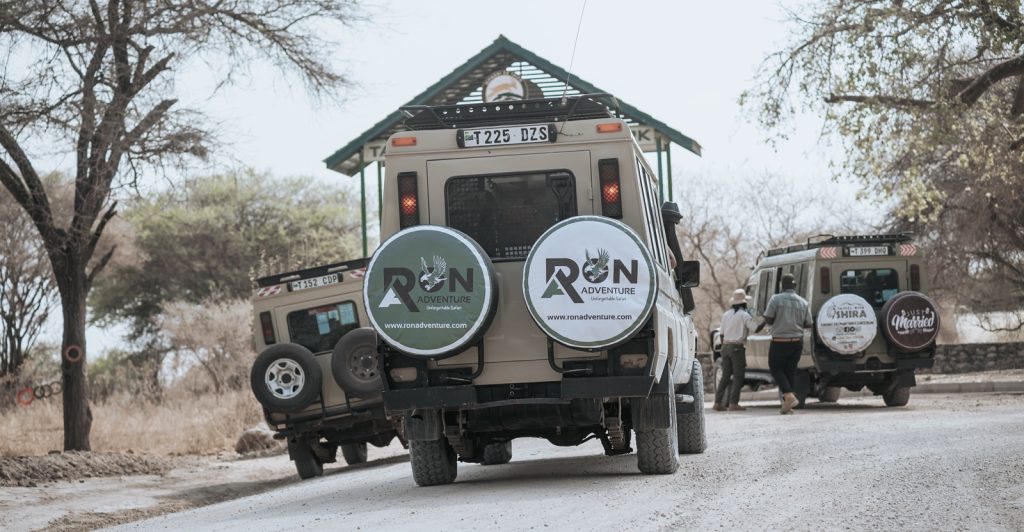
Tanzania’s blend of savannas, mountains, islands, and cultures creates one unified destination that satisfies every travel aspiration.
Tanzania’s People Bring Warmth to Every Journey
Beyond landscapes and wildlife, the soul of Tanzania lies in its people. Tanzanians are known for their hospitality, kindness, and welcoming spirit. The concept of “Karibu”, meaning “welcome”, is deeply ingrained in the culture. Whether in lodges, villages, or markets, travelers often highlight the genuine smiles and warm interactions as central to their experience.
Guides in Tanzania are among the best trained in Africa, blending wildlife expertise, storytelling, and hospitality. Their knowledge enhances every game drive, and many travelers leave with lifelong memories formed through these shared moments.
It is the people, as much as the wildlife, that make Tanzania unforgettable.
Why Tanzania Truly Stands Above the Rest
Tanzania stands at the pinnacle of African safari destinations because it combines every element that travelers dream of when imagining Africa. It offers unparalleled wildlife encounters, legendary parks, geological wonders, thriving cultures, pristine beaches, and a deep commitment to conservation. Its landscapes are vast, varied, and timeless. Experiences are immersive and authentic. Its people are warm and welcoming.
Tanzania After the 2025 General Election: Is it safe to visit
From the thunder of the Great Migration, the breathtaking descent into the Ngorongoro Crater, the silent majesty of Tarangire’s giants, and the spice-scented breezes of Zanzibar, Tanzania create an emotional journey that stays with travelers long after they leave.
It is not just a place to see wildlife. It is a destination where travelers feel a connection to the earth, to history, to nature, and to themselves. Tanzania, in every sense, stands as the best African safari destination because it captures the essence of Africa in its purest form.
All Categories
Recent Posts
Why Tanzania Is the Best African Safari Destination
Is Tanzania Safe to Visit After the 2025 Election?
Serengeti Safari Guide
Ultimate 5 Days Tanzania Safari Guide
5 Hidden Gems of Tanzania
Planning a Safari from Zanzibar
The Great Wildebeest Migration
Understanding Mountain Sickness
Why Visit Tanzania in the Next Safari Season (2026)
Serengeti Balloon Safari
Why Tourists Choose Ron Adventure
Exploring Tanzania with Kids
How to Plan and Book a Wildebeest Migration Safari
Tanzania Safari Vehicles
THINGS TO DO IN TANZANIA 2025-2026
Tanzania Tour Packages 2025-2026
Ngorongoro Crater Tour A Journey into Africa’s Wildlife Wonderland
Discover the Wildlife of Ngorongoro Crater A Safari Adventure
Ngorongoro Crater The Eighth Wonder of the World
Affordable Tanzania Safari Packages
